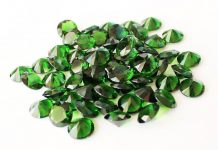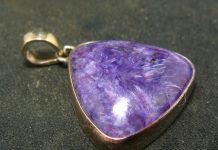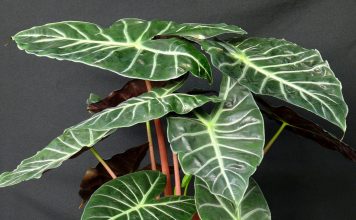Content:
- The main signs of the flower stone rose
- Stone rose: species
- Stone rose at home
- Lighting
- Temperature
- Watering mode
- Fertilizer and soil
- Transfer
- Breeding
- Diseases, pests, treatment
Stone rose or young can grow both in the house and in the open field. Plant care is simple, but the result is an interesting specimen of unusual shape.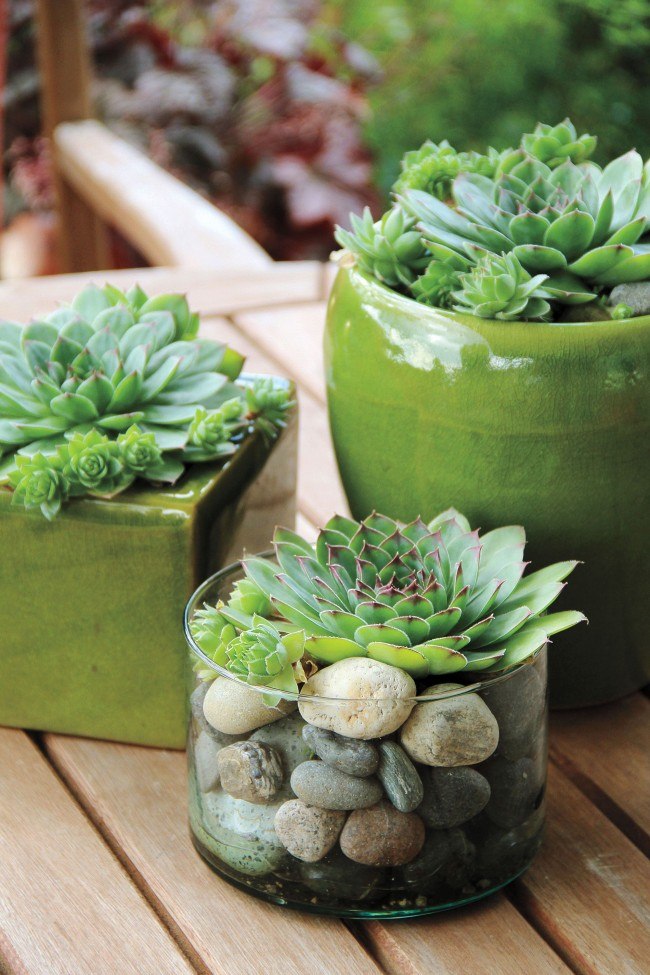
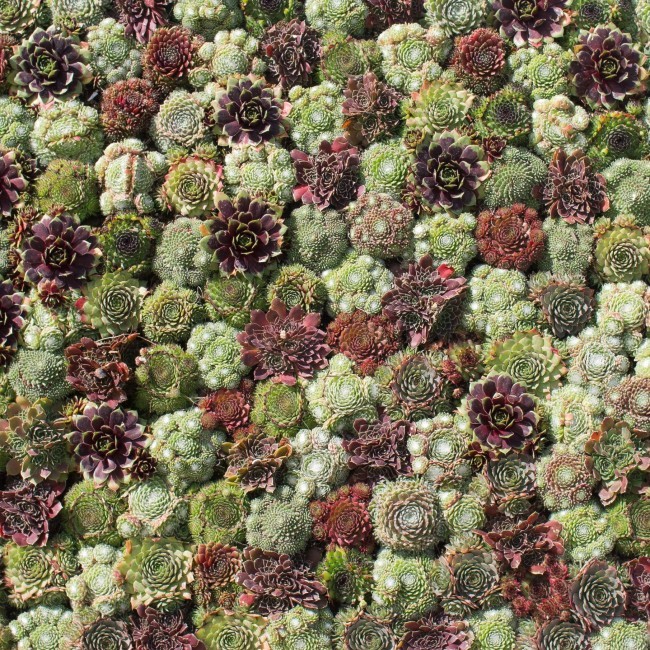
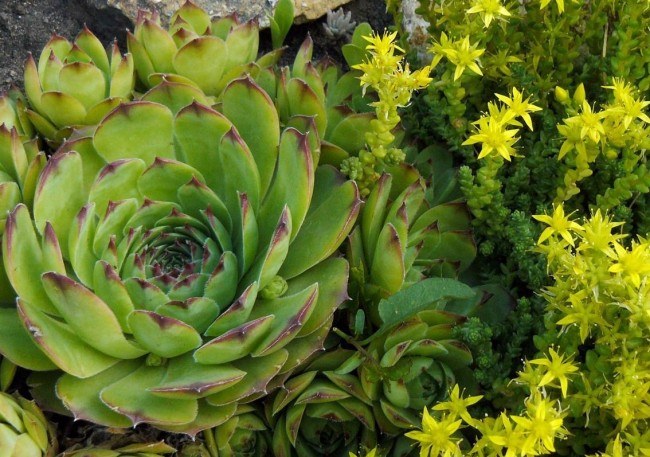
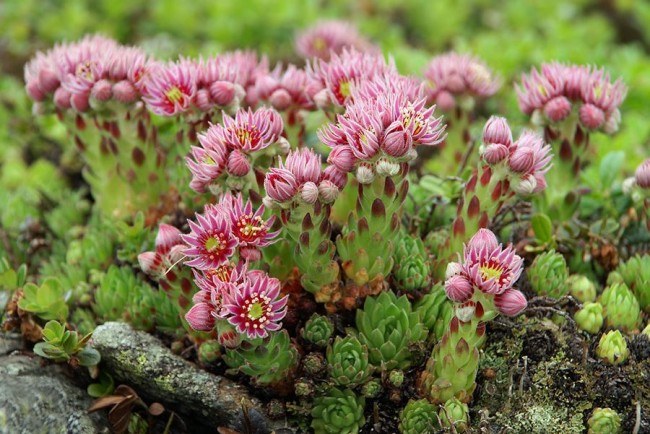
The main signs of the flower stone rose
The name of a plant from Latin is translated as “forever alive”. Another name sounds like “hare cabbage,” as the flower looks like a head of cabbage. According to legends, he is able to protect the house from lightning, so some particularly superstitious people plant it on the roof. Hence another name - "roofing young."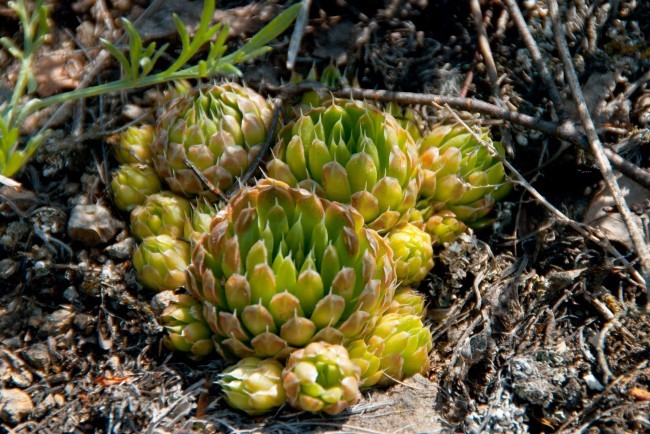


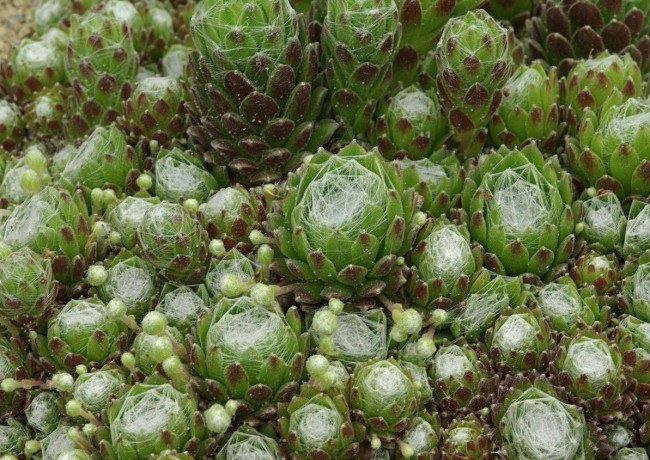
Attractive plant species preserves almost the entire season. Dense leafy sockets do not lose their elasticity and freshness not in the apartment, not on the site.The quality of the soil, gaps in the care and watering, as well as temperature drops are not able to destroy the outlet. On good soil from humus and compost the flower will look great. The diameter of a healthy plant can reach 15 cm. Some individuals may be of an unusual color (ruby, purple, brown), which makes the interior or landscape design even more picturesque.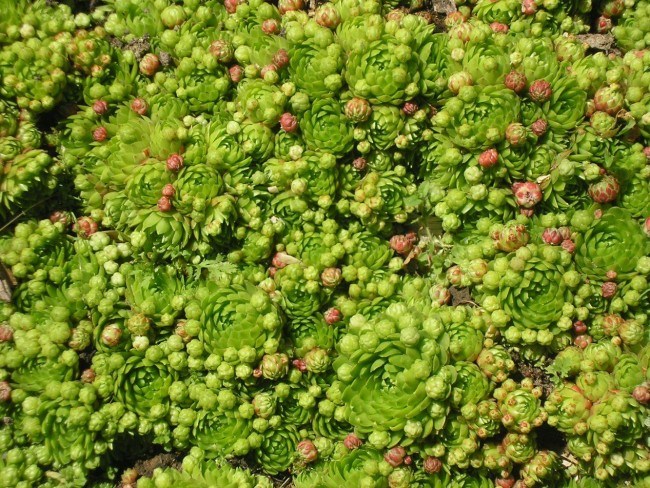
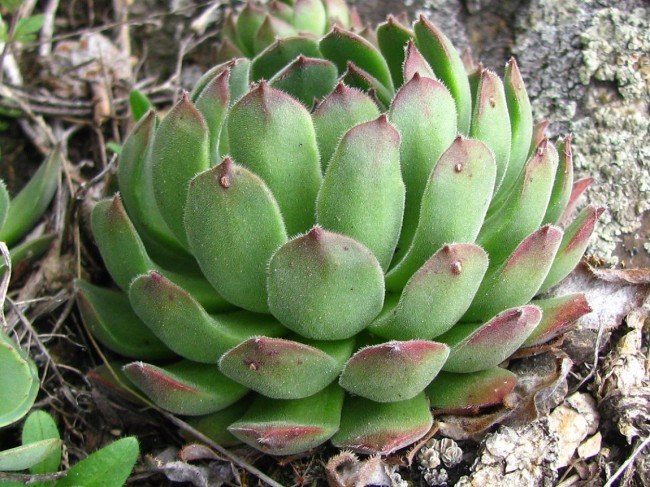

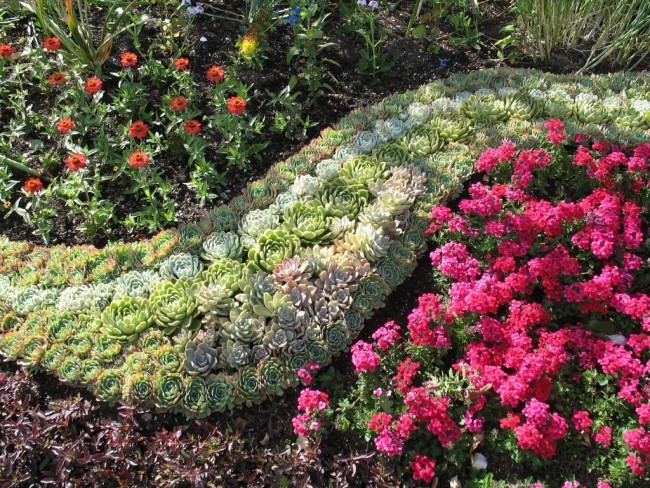
Stone rose: species
There are about 50 types of stone roses. It belongs to the genus Echiveria along with other species. A common feature of these succulents are thick, fleshy leaves, which accumulate moisture and nutrients. You can distinguish varieties by size, shape and color. Also, some species have a trunk, while others are completely devoid of it.



Agave stone rose
Most often, this variety is found in Mexico. The stem of a plant can be stretched up to 15 cm. At the top of the stem are leaves 0.5 cm thick. They are oval-shaped and light green in color. The end of the sheet is slightly sharpened, and along the contour is a red-brown border. During the period of flowering, short flower stalks appear, on which small pinkish flowers bloom, which later gather in elongated inflorescences.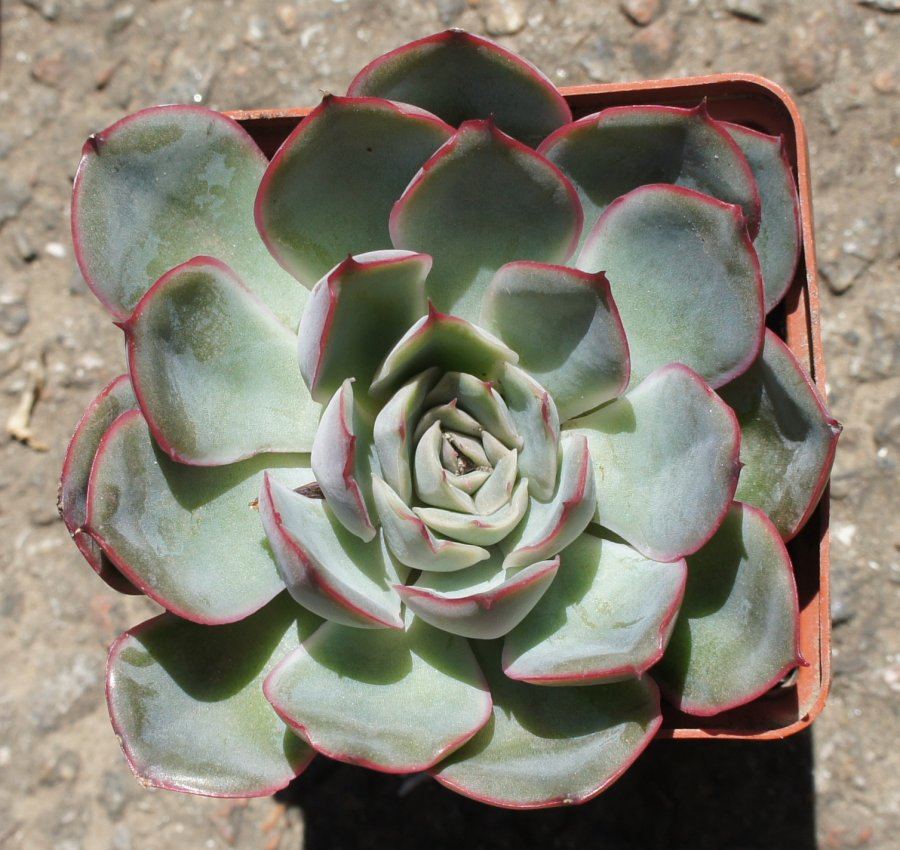

Black Prince
This variety is a hybrid. The flower is obliged by its name to small elongated leaves with a pointed end. Their color from green through burgundy gradually goes almost to a black shade at the ends. The diameter of the outlet is 15 cm. The plant blooms with red spikelets on long peduncles. The flowering period is at the end of summer.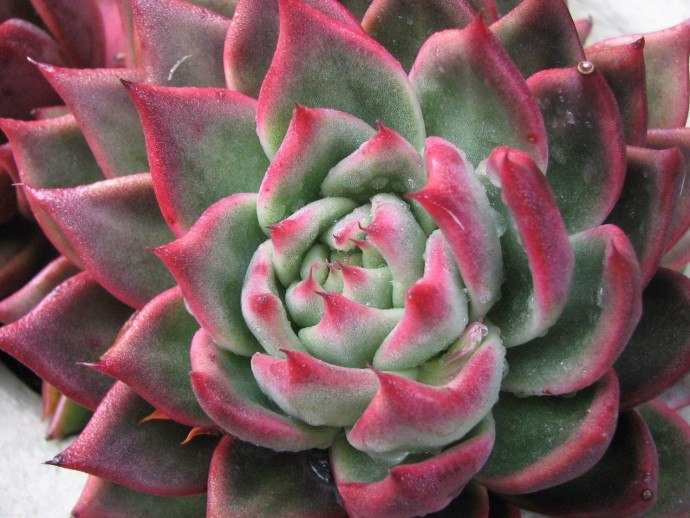
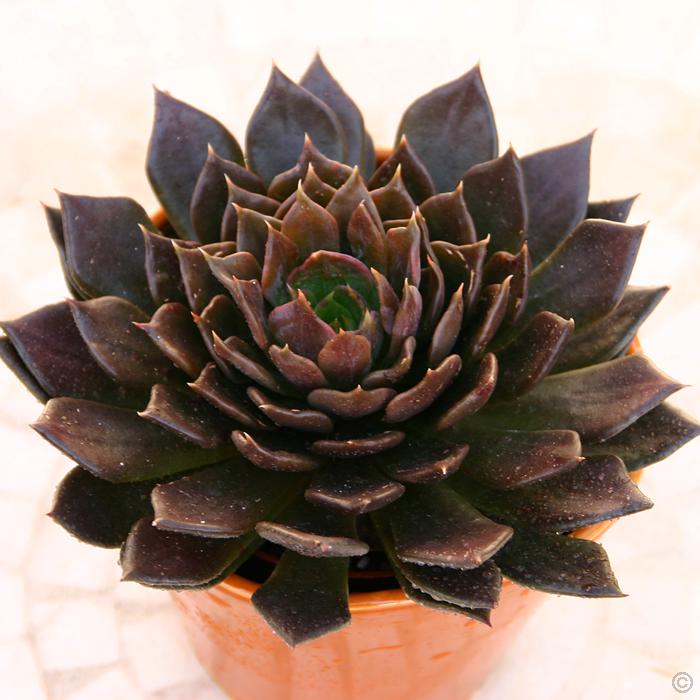


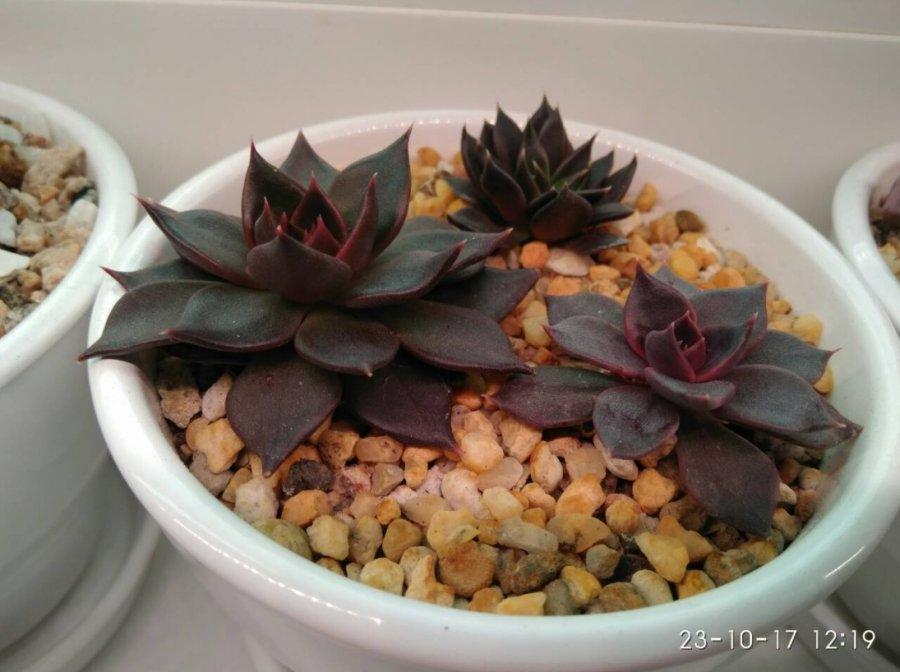
Lau
This species has an almost white color. The leaves are covered with a waxy coating that is easily washable. The leaves collected in the outlet, have the form of a somewhat deformed diamond. This variety blooms large, not peculiar to Ehiverii, pink flowers. Unlike other varieties, Lau requires gentle handling.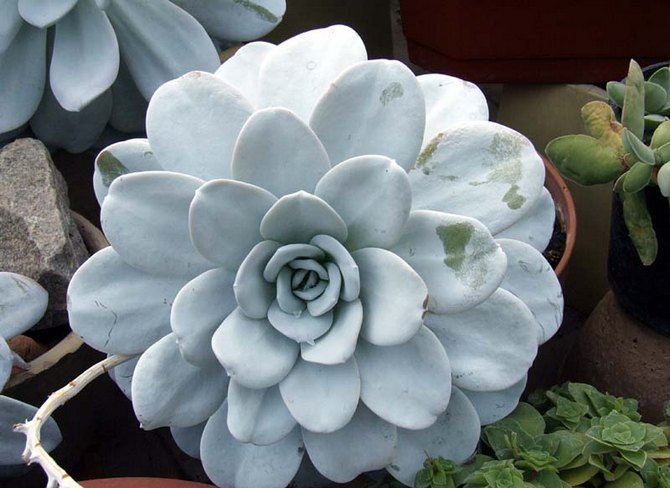

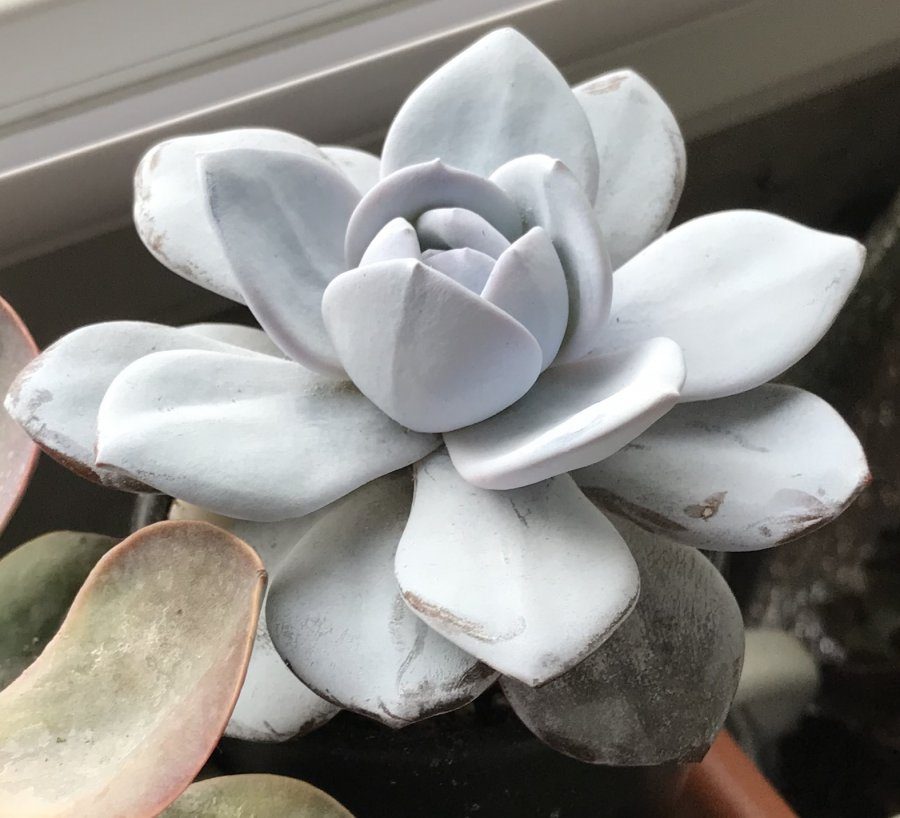
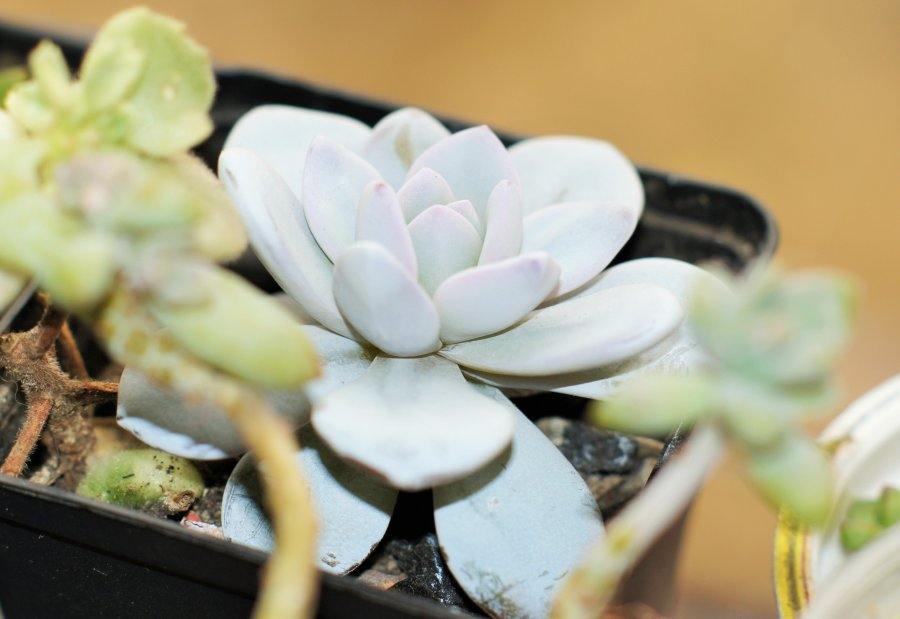
Pelisuda
This variety differs in that its leaves have a special angle of growth. The edge of the leaves is colored brown. The oval sheet is provided with a sharp tip.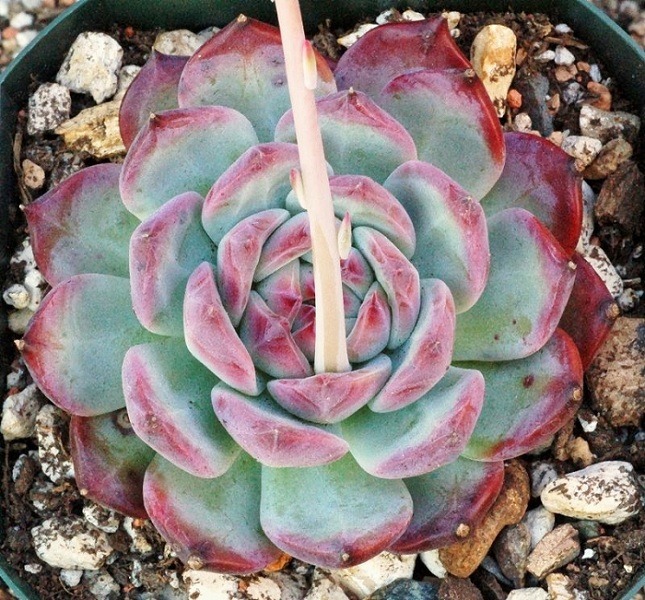
Graceful
The trunk, on which the leaves of a graceful stone rose grow, eventually falls to the ground and takes root. The leaves usually reach a length of 6 cm and have a pointed end. The color of the plant of this variety varies between pale green and white and silver. At the end of May, the rose will bloom with a pink-yellow inflorescence, reaching a length of up to 20 cm.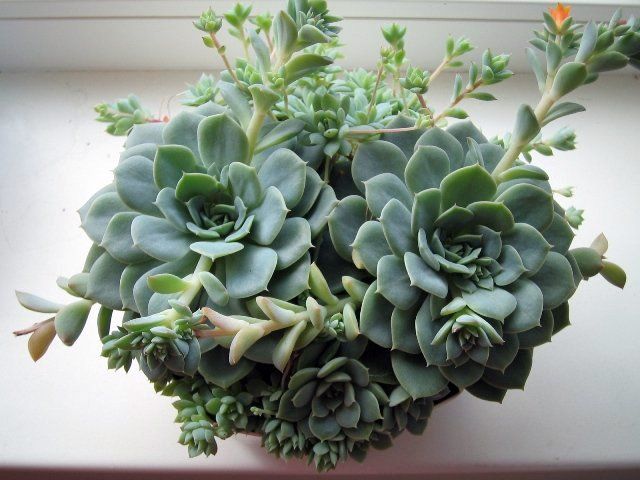
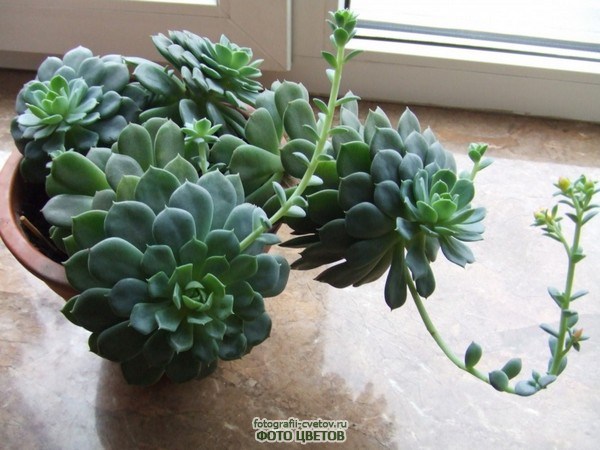
Stone rose at home
This plant is unpretentious in the care. It can grow at home or in the open field and is great for getting an experience to a beginner florist. A stone rose blooms once a year. It is very important to remove the dried inflorescence in order to give the flower again to gain strength for the new season.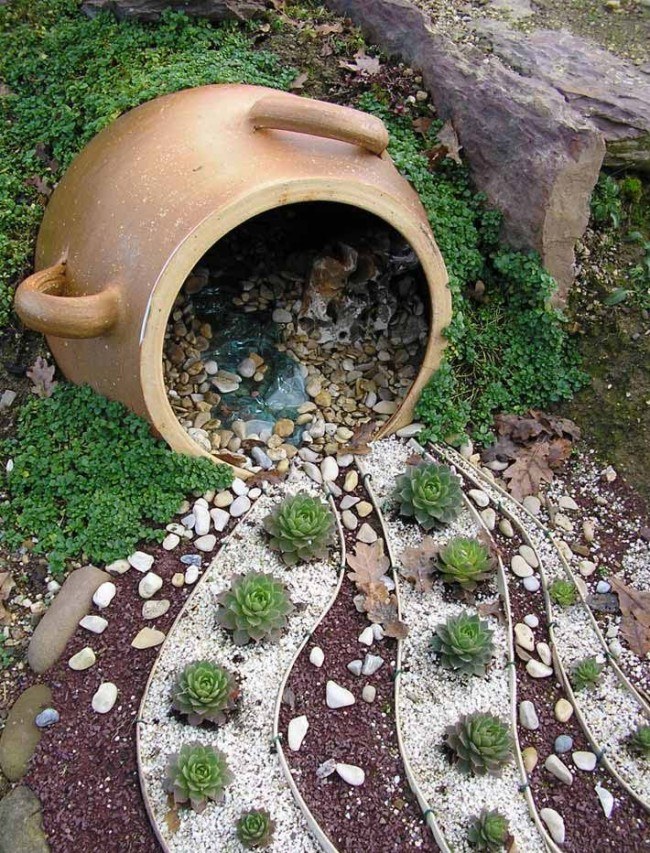
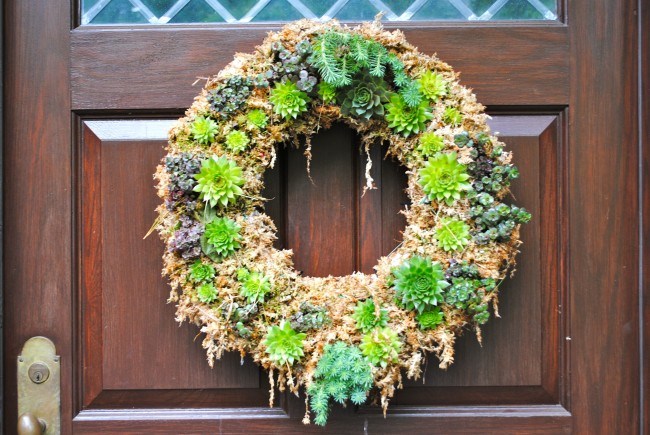
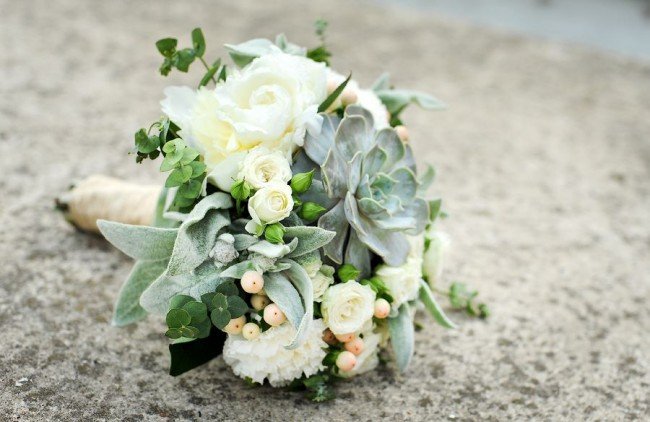
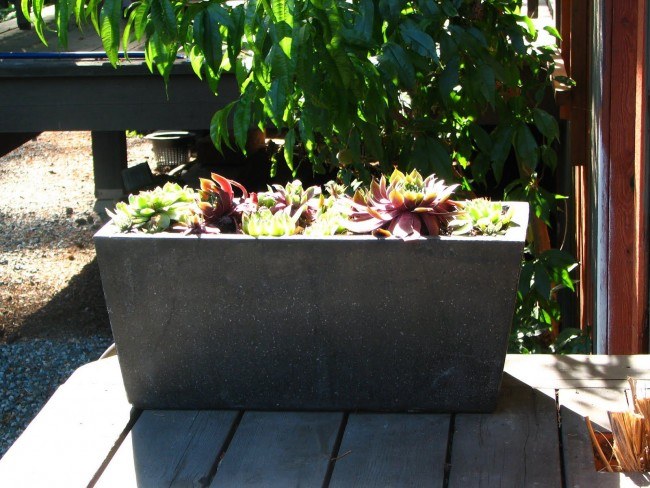

Rejuvenated feels great in the light. In the garden, such a plant is best planted on a sunny plot. Even the scorching rays of the sun will not damage the stone rose. If the light is not enough, the flower will lose its shape, stretch out and will no longer perform its decorative functions so successfully. If the rose is grown at home, then it needs a south window or an additional light.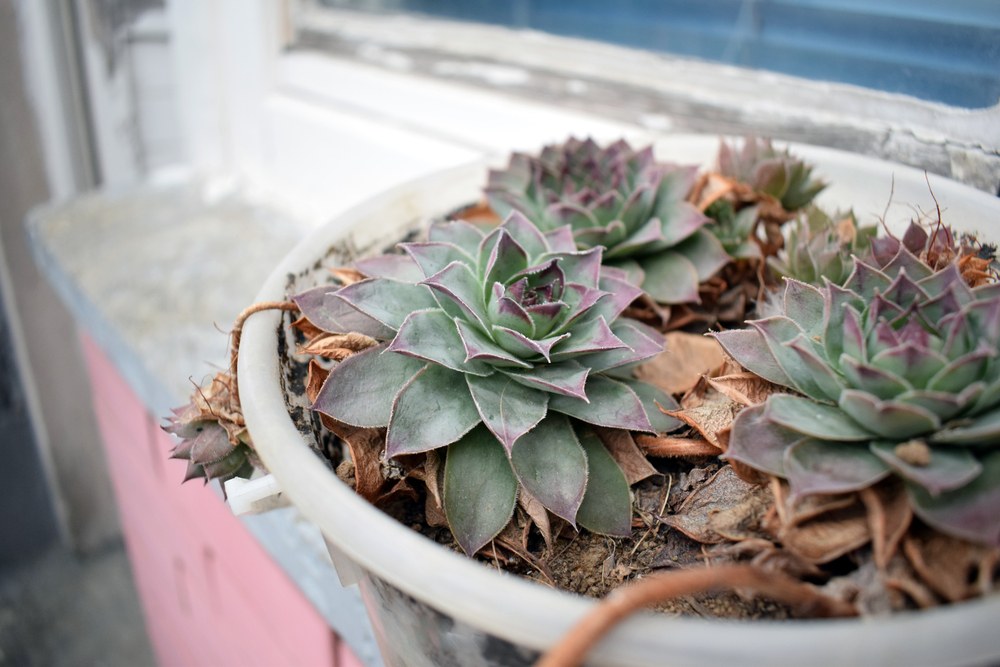

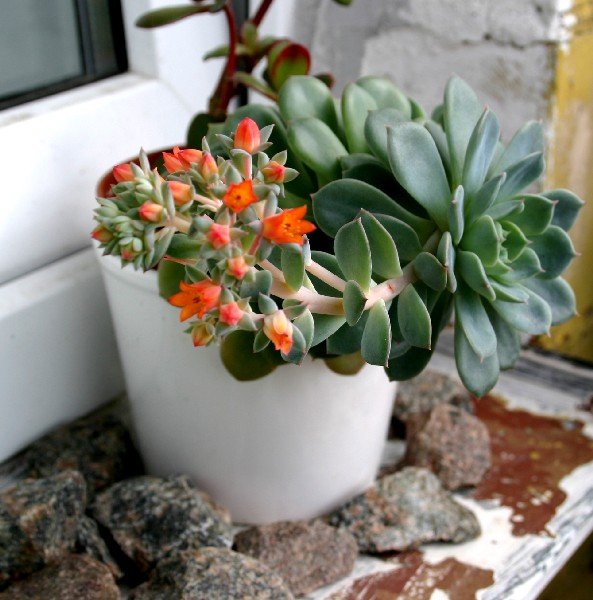
As mentioned above, the young love light and warmth. As soon as the frost subsides, the plant pot can be taken out onto the open balcony. But the frost for the flower is not a hindrance. Those individuals that are grown in open ground, can be covered with a layer of fallen leaves. The heat stored in this way will be quite enough for the plant. It is very important to provide access to fresh air to the flower that is constantly in the house. Enough regular ventilation and sunbathing on the balcony.
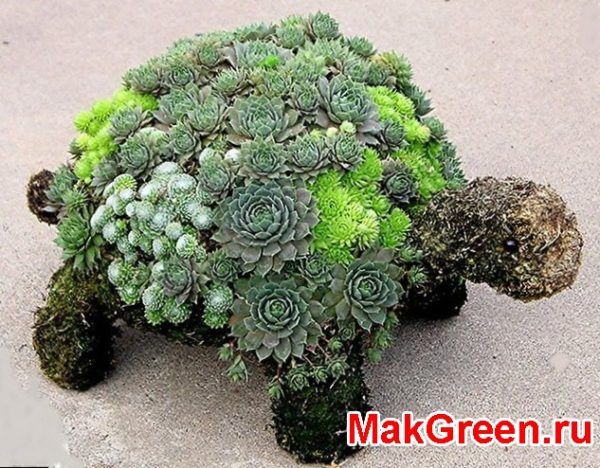
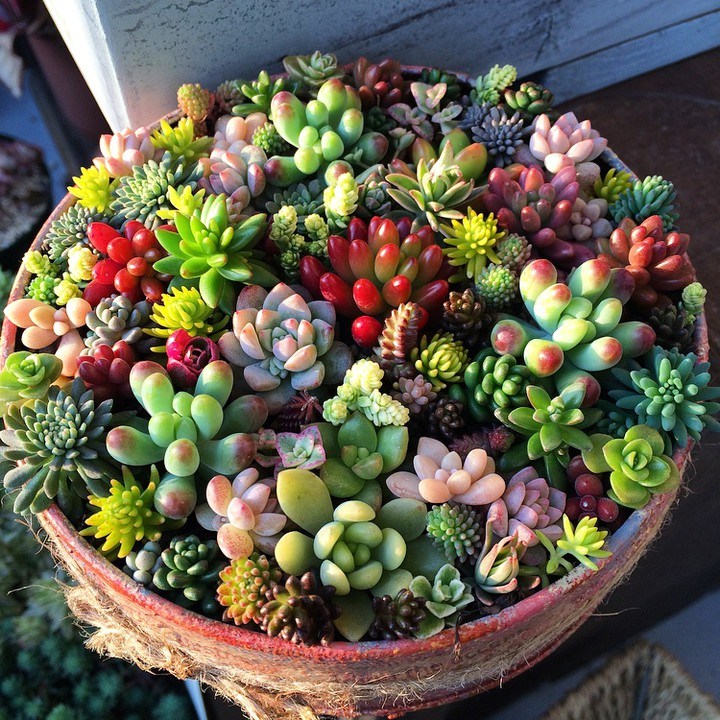

Succulents are watered rarely. In winter, irrigation can be done a couple of times a month. If droughty hot weather has arrived, then watering is increased to once a week. Pour the liquid must be at the root. Leaves wet from the water may start to rot.

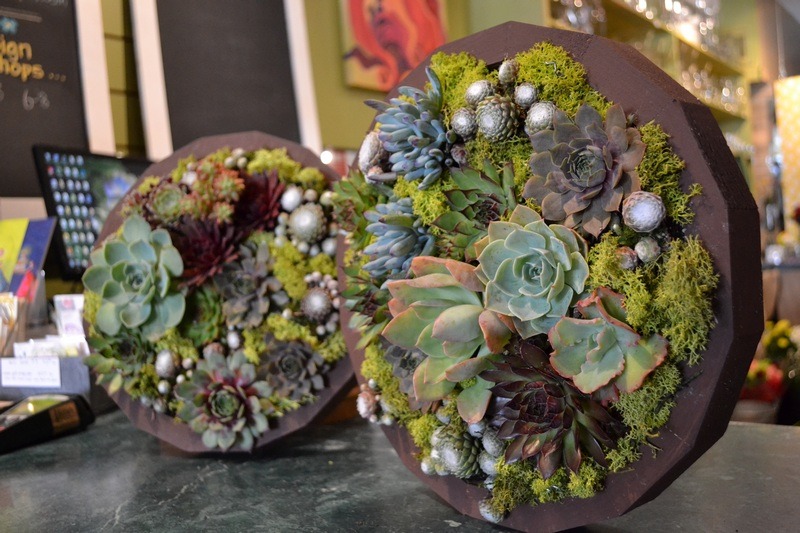

The soil for growth should be quite loose. It should contain sand and be the desired level of acidity. The plant requires quality drainage.This should take care when planting a flower in the ground. In the pot drainage material should be at least one third of the volume.
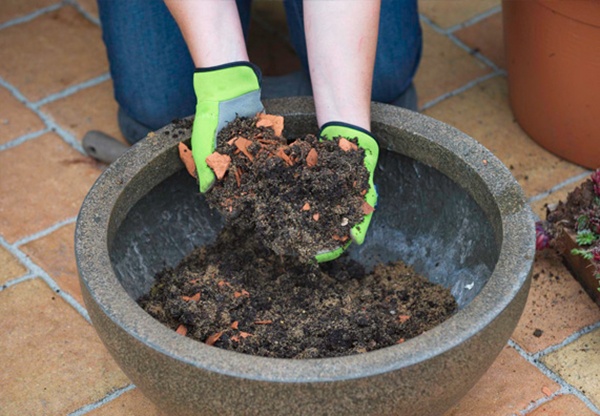

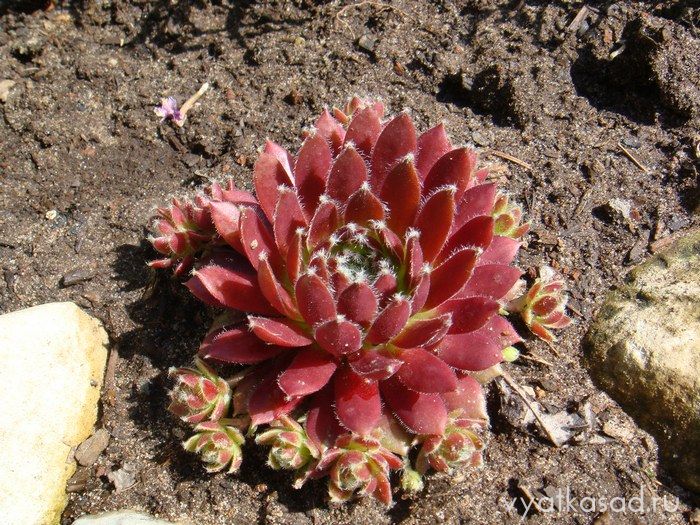
Also in the soil it is worth adding humus and crushed charcoal. Fertilizers need to be limited. Excessive stimulation of growth of the outlet will change its shape, the leaves will lose brightness, and the capriciousness of the bush itself will increase. If the plant has reached the age of 3-4 years, then the top dressing should be added only in the amount of half the dose recommended by the instructions.

Florists who grow young in the apartment, rarely transplant the plant. The superficial root system, characteristic of a stone rose, will fill the pot for a long time. Most often it becomes young part of the composition with higher plants. This method allows you to decorate the garden. To transplant a flower from a pot to an open ground, it is necessary to separate it with an impressive lump of earth. You need to have a rose at a distance of 15 cm from other plants.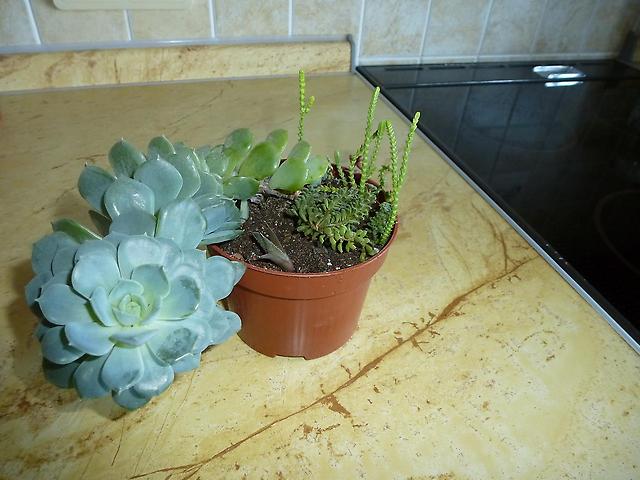
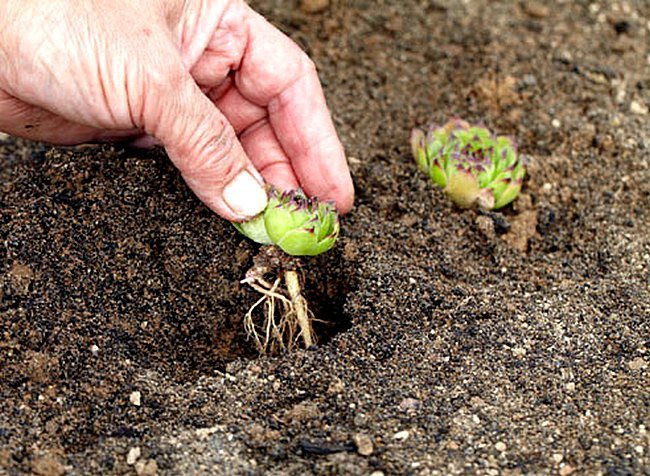
In the sinuses of an adult plant, seeds and daughter processes are born. With their help, you can carry out the process of breeding stone roses. The processes are removed from the parent plant when their age is sufficient to stretch to the ground. They can be planted next to an adult plant or separately. If you want to germinate seeds, they need to be sown in early spring. They are immersed in the ground by 10 mm and allowed to germinate at a temperature of 20 degrees. Reproduction occurs quickly and easily and does not require additional effort. In the open ground rose grow independently.

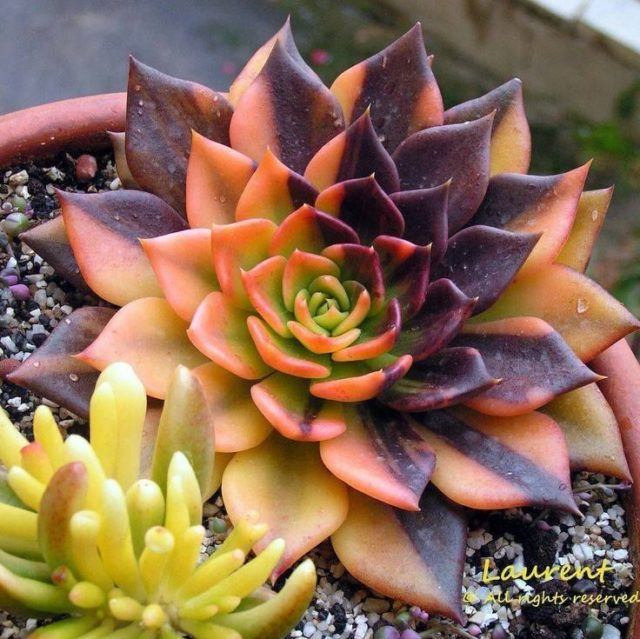
Most of all youngster promise weeds. Growing around the sockets, they rob them of useful substances. Weed grass, growing above a stone rose, hides it from the sun.
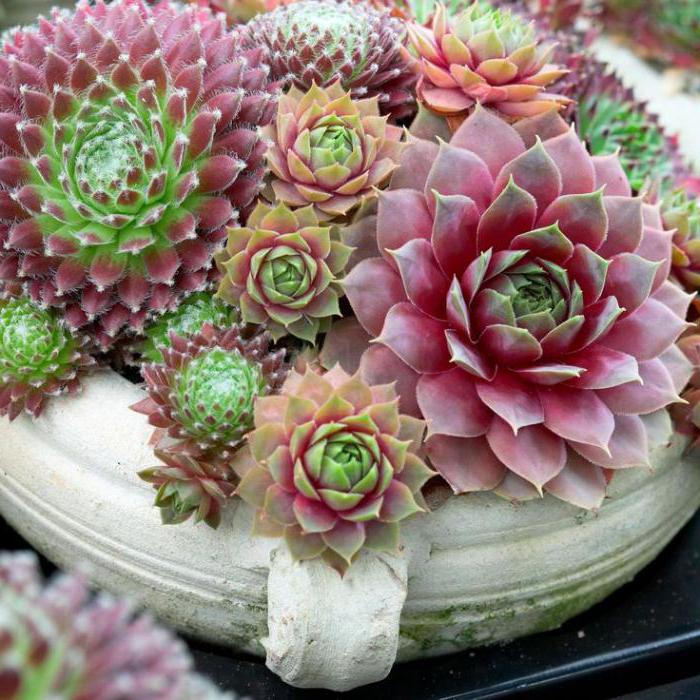
With the rest of the ills youngsters can handle on their own. It does not attract parasites and does not suffer from fungal infections. The plant must have enough heat and light to grow healthy and beautiful.

























